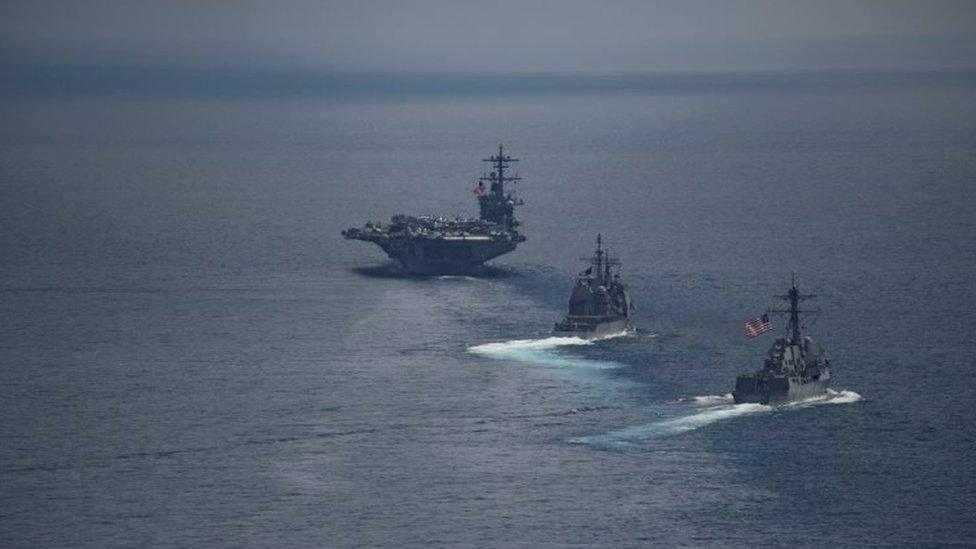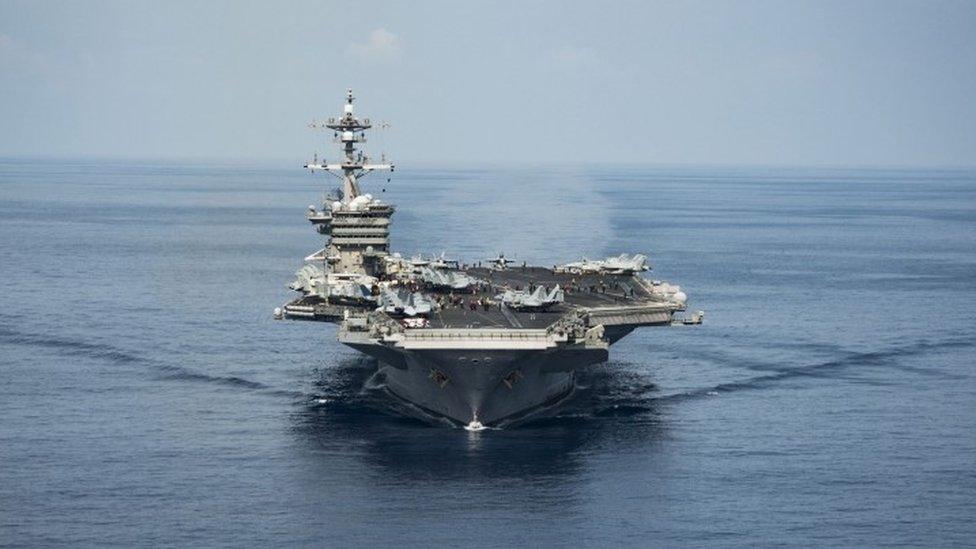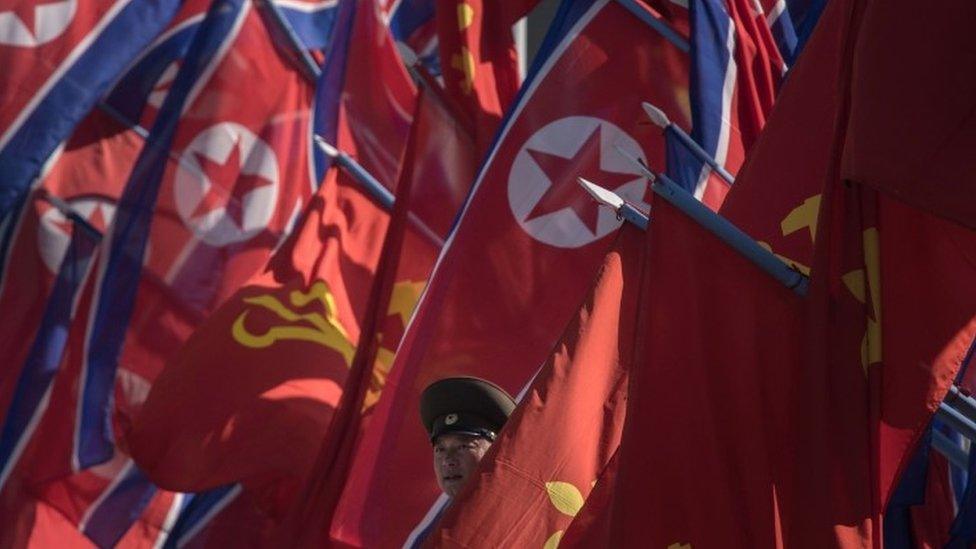China urges 'restraint' amid North Korea sinking threat
- Published

North Korea is continuing with missiles tests and there are fears it may conduct another nuclear test
China's president has called for "restraint" from all parties in a call with US President Donald Trump, a day after Pyongyang said it was "ready" to sink a US aircraft carrier.
The telephone conversation is the second between the two leaders since they met in Florida earlier this month.
It highlights Chinese fears that tensions between the US and North Korea could erupt into conflict.
Mr Trump criticised Pyongyang's belligerence, the White House said.
On Sunday state media said North Korea's forces were "combat-ready to sink" US aircraft carrier USS Carl Vinson, which the US says is due to arrive off the Korean peninsula "within days".
The aircraft carrier was despatched by Mr Trump amid a warning that US "strategic patience" over the North's nuclear ambitions had come to an end.
The bombastic message - the ruling Workers' Party newspaper Rodong Sinmun called the carrier a "gross animal" - was the latest in a series of bellicose statements and threats from Pyongyang.

The USS Carl Vinson (left) and other warships were in the Indian Ocean over the weekend
In the telephone call, Mr Xi urged all parties to "maintain restraint and avoid actions that would increase tensions", according to the Chinese foreign ministry.
The White House said Mr Trump "emphasised that Pyongyang's actions are destabilising the Korean Peninsula".
The two leaders met on 7-8 April at Mr Trump's Florida resort and then spoke about North Korea by telephone on 12 April, as tensions rose.
Pyongyang says it will press ahead with missile tests despite Mr Trump's warnings. Experts also believe that it may be preparing for another nuclear test, defying UN resolutions.
Tuesday is the 85th anniversary of the founding of the Korean People's Army and North Korea has previously marked such anniversaries with missile or nuclear tests.
China has traditionally been North Korea's ally and the nation with the most influence over Pyongyang, but its stance towards its northern neighbour appears to be hardening.
In recent weeks it has faced repeated calls from the US to impose tougher financial sanctions that would hurt the regime in Pyongyang.
A Chinese foreign ministry spokesman said that call between the two leaders was a sign of their close communication.

Timeline of recent tensions
8 April: The US military orders a navy strike group to move towards the Korean peninsula
11 April: North Korea says it will defend itself "by powerful force of arms"
15 April: North Korea puts on a huge military parade - complete with missiles - to mark 105th birthday of the nation's founding president, Kim Il-sung. Meanwhile US Vice-President Mike Pence arrives in South Korea
16 April: North Korea conducts a rocket test, but it fails
17 April: Senior North Korean official tells the BBC the country will continue to test missiles "weekly" and Mr Pence warns North Korea not to "test" Donald Trump
18 April: It emerges the US Navy strike group was not heading towards North Korea when US officials suggested it was
22 April: US Vice-President Mike Pence says the group will arrive off the Korean peninsula "within days".
23 April: North Korea says it is "ready to sink" the US aircraft carrier

The US president also held telephone talks on North Korea with Japanese leader Shinzo Abe on Monday. The two agreed to "keep a high level of vigilance and respond firmly", Mr Abe said afterwards.
Two Japanese destroyers have joined the carrier group for exercises. Envoys from the US, South Korea and Japan are also due to meet in Japan on Tuesday to discuss the current crisis.
North Korea says its nuclear programme is defensive but it is trying to develop weapons small enough to put on ballistic missiles.
There is no evidence yet it has done so or that it has missiles with the range to reach long-distance targets like the US mainland, but experts believe it will achieve these goals in the future.
- Published23 April 2017

- Published23 April 2017

- Published21 April 2017
- Published4 July 2017
